Fracture Propagation Mechanism of Tight Conglomerate Reservoirs in Mahu Sag
Abstract
:1. Introduction
2. Methodology
2.1. Rock Mechanical Parameters Test
2.2. Rock Sources
2.3. Experimental Equipment and Specimen Preparation
2.4. Experimental Methodology
3. Results and Discussion
3.1. Description of the Experimental Results
3.1.1. Effect of Gravel Size on Fracture Morphology
3.1.2. Effect of Fracturing Fluid Viscosity on Fracture Propagation
3.1.3. Effect of Pumping Rate on Fracture Propagation
3.2. Analysis of the Experimental Results
3.2.1. Mode 1: Over-Peak Pressure Drop—Propagation Pressure Flat
3.2.2. Mode 2: Over-Peak Pressure Decreased Slightly—Stable Extension Pressure
3.2.3. Mode 3: No Significant Fracture Pressure
4. Conclusions
Author Contributions
Funding
Data Availability Statement
Conflicts of Interest
References
- Xiao, Z.; Chen, S.; Liao, J.; Li, Y.; Wang, P.; Ding, Z. Channel architecture element and its controls on hydrocarbon accumulation: A case study from Chang-8 member in Huaqing area, Ordos basin. Xinjiang Pet. Geol. 2018, 39, 524–529. [Google Scholar]
- Chen, X.; Zhi, D.; Wang, X. Typical Reservoirs in Oil and Gas Fields of Junggar Basin: The Southern Margin; Petroleum Industry Press: Beijing, China, 2018. [Google Scholar]
- Zou, C.-N.; Zhang, G.-Y.; Tao, S.-Z.; Hu, S.-Y.; Li, X.-D.; Li, J.-Z.; Dong, D.-Z.; Zhu, R.-K.; Yuan, X.-J.; Hou, L.-H.; et al. Geological features, major discoveries and unconventional petroleum geology in the global petroleum exploration. Pet. Explor. Dev. 2010, 37, 129–145. [Google Scholar]
- Yang, Y.-T. Evaluation of Petroleum Resources in Mahu Area, Junggar Basin. Guangzhou Chem. Ind. 2022, 50, 191–193+196. [Google Scholar]
- Song, J.-G.; Li, X.-S.; You, H.-Y.; Pan, H.; Wang, S.; Gu, K.-F.; Luo, G.-X.; Li, T. Pressure Analysis of Fractured Horizontal Wells Considering the Complex Modal Structure of Mahu Conglomerate Reservoir. Sci. Technol. Eng. 2022, 22, 8295–8303. [Google Scholar]
- Pan, Y.-T.; Liu, P.-Y.; Shi, S.-Z.; Wang, T.; Shen, Y.-H.; Ge, H.-K. Fracture Interference Law of Mahu Tight Conglomerate. Sci. Technol. Eng. 2022, 22, 10050–10058. [Google Scholar]
- Hu, X.; Zou, H.; Hu, Z. Reservoir characteristics and main controlling factors of glutenite reservoir in fan dalta glutenite: A case study of the Upper Urho Formation of Permian in the east slope of Dongdaohaizi Sag, Junggal Basin. J. Northeast. Pet. Univ. 2021, 45, 15–26+5–6. [Google Scholar]
- Wang, Y.; Zhao, X.; Tang, C.; Zhang, X.; Ma, C.; Yi, X.; Jing, Y. Study on Microscopic Pore Structure Classification for EOR of Low Permeability Conglomerate Reservoirs in Mahu Sag. Energies 2023, 16, 626. [Google Scholar] [CrossRef]
- Meng, Q.M.; Zhang, S.C.; Guo, X.M.; Chen, X.H.; Zhang, Y. A Primary lnvestigation on Propagation Mechanism for Hydraulic Fractures in Glutenite Formation. J. Oil Gas Technol. 2010, 32, 119–123. [Google Scholar]
- Liu, X.; Xiong, J.; Liang, L. Rock Mechanical Characteristics and Fracture Propagation Mechanism of Sandy Conglomerate Reservoirs in Baikouquan Formation of Mahu Sag. Xinjiang Pet. Geol. 2018, 39, 83–91. [Google Scholar]
- Liu, P.; Ju, Y.; Ranjith, P.G.; Zheng, Z.; Chen, J. Experimental investigation of the effects of heterogeneity and geostress difference on the 3D growth and distribution of hydrofracturing cracks in unconventional reservoir rocks. J. Nat. Gas Sci. Eng. 2016, 35, 541–554. [Google Scholar] [CrossRef]
- Wang, H. The Study of Hydraulic Fracture Propagation Influenced by Gravel in Sand-Gravel Reservoir. Master’s Thesis, China University of Petroleum, Beijing, China, 2011. [Google Scholar]
- Ma, X.F.; Zou, Y.S.; Li, N.; Chen, M.; Zhang, Y.; Liu, Z. Experimental study on the mechanism of hydraulic fracture growth in a glutenite reservoir. J. Struct. Geol. 2017, 97, 37–47. [Google Scholar] [CrossRef]
- Chen, J. The Influence of Tensile Strength Difference with Variable Gravel Sizes on the Hydraulic Fracture Propagation in the Conglomerate Reservoir. Geofluids 2022, 2022, 5290189. [Google Scholar] [CrossRef]
- Li, G.; Ai, T.; Yu, B.; Zhang, R.; Gao, M.Z.; Xu, X.L. Acoustic emission characteristics of different lithologies under Brazilian splitting. J. China Coal Soc. 2015, 40, 870–881. [Google Scholar] [CrossRef]
- Su, C.D.; Zhang, S.; Tang, X. Experimental research on deformation and strength characteristics in process of Brazilian split fatigue failure of sandstone. Chin. J. Rock Mech. Eng. 2013, 32, 41–48. [Google Scholar]
- Qin-Feng, D.U.; Shun, Y.U.E.; Gao-Fei, D.A.I. Comparative study on direct tension test and splitting test. Undergr. Space 2004, 24, 178–181. [Google Scholar]
- Gang, W.U.; Zhenyang, Z. Acoustic emission character of rock materials failure during various stress states. Chin. J. Geotech. Eng. 1998, 20, 82–85. [Google Scholar]
- Li, S.L.; Yin, X.; Wang, Y.; Tang, H. Studies of acoustic emission characteristics of uniaxial compressive rock failure. Chin. J. Rock Mech. Eng. 2004, 23, 2499–2503. [Google Scholar]
- Hou, P.; Gao, F.; Yang, Y.; Zhang, Z.Z.; Gao, Y.; Zhang, X.; Zhang, J. Effect of bedding plane direction on acoustic emission characteristics of shale in Brazilian tests. Rock Soil Mech. 2016, 37, 603–1612. [Google Scholar]
- Zhang, C.M.; Wang, X.L.; Zhu, R.; Qu, J.H.; Pan, J.; An, Z.Y. Litho⁃ facies classification of Baikouquan formation in Mahu sag, Junggar basin. Xinjiang Pet. Geol. 2016, 37, 606–614. [Google Scholar]
- Wang, X.; Li, W.; Dong, H.; Zhu, J.; Zhang, D.; Yin, S. Genetic classification of sandy conglomerate facies and sedimentary characteris⁃ tics of fan delta: A case study from Upper Wuerhe formation in District Wuba in northwestern margin of Junggar basin. Xinjiang Pet. Geol. 2017, 38, 537–543. [Google Scholar]
- Zhang, C.M.; Yin, T.J.; Tang, Y.; Guo, G.X.; Zhao, K.; Pan, J.; Chen, M.L. Advances in sedimentological reservoir research in Mahu sag and northwest margin of Junggar basin. J. Palaeogeogr. 2020, 22, 129–146. [Google Scholar]
- Zhang, C.; Song, X.; Wang, X.; Wang, X.; Zhao, K.; Shuang, Q.; Li, S. Origin and depositional characteristics of supported conglomerates. Pet. Explor. Dev. 2020, 47, 272–285. [Google Scholar] [CrossRef]
- Yu, X.; Qu, J.; Tan, C.; Lei, Z.; Xiaolu, L.I.; Zhaopu, G. Conglomerate Lithofacies and Origin Models of Fan Deltas of Baikouquan Formation in Mahu Sag, Junggar Basin. Xinjiang Pet. Geol. 2014, 35, 619–627. [Google Scholar]
- Li, S.; Ma, X.; Zhang, S.; Zou, Y.; Li, N.; Zhang, Z. Experimental investigation on the influence of CO2 brine rock interaction on tight sandstone properties and fracture propagation. Xinjiang Pet. Geol. 2019, 40, 312–318. [Google Scholar]
- Zou, Y.S.; Li, N.; Ma, X.; Zhang, S.; Li, S. Experimental study on the growth behavior of supercritical CO2-induced fractures in a layered tight sandstone formation. J. Nat. Gas Sci. Eng. 2018, 49, 145–156. [Google Scholar] [CrossRef]
- Li, N.; Zhang, S.; Ma, X.; Zou, Y.S.; Chen, M.; Li, S.H.; Zhang, Y.N. Experimental study on the propagation mechanism of hydraulic fracture in glutenite for mations. Chin. J. Rock Mech. Eng. 2017, 36, 2383–2392. [Google Scholar]
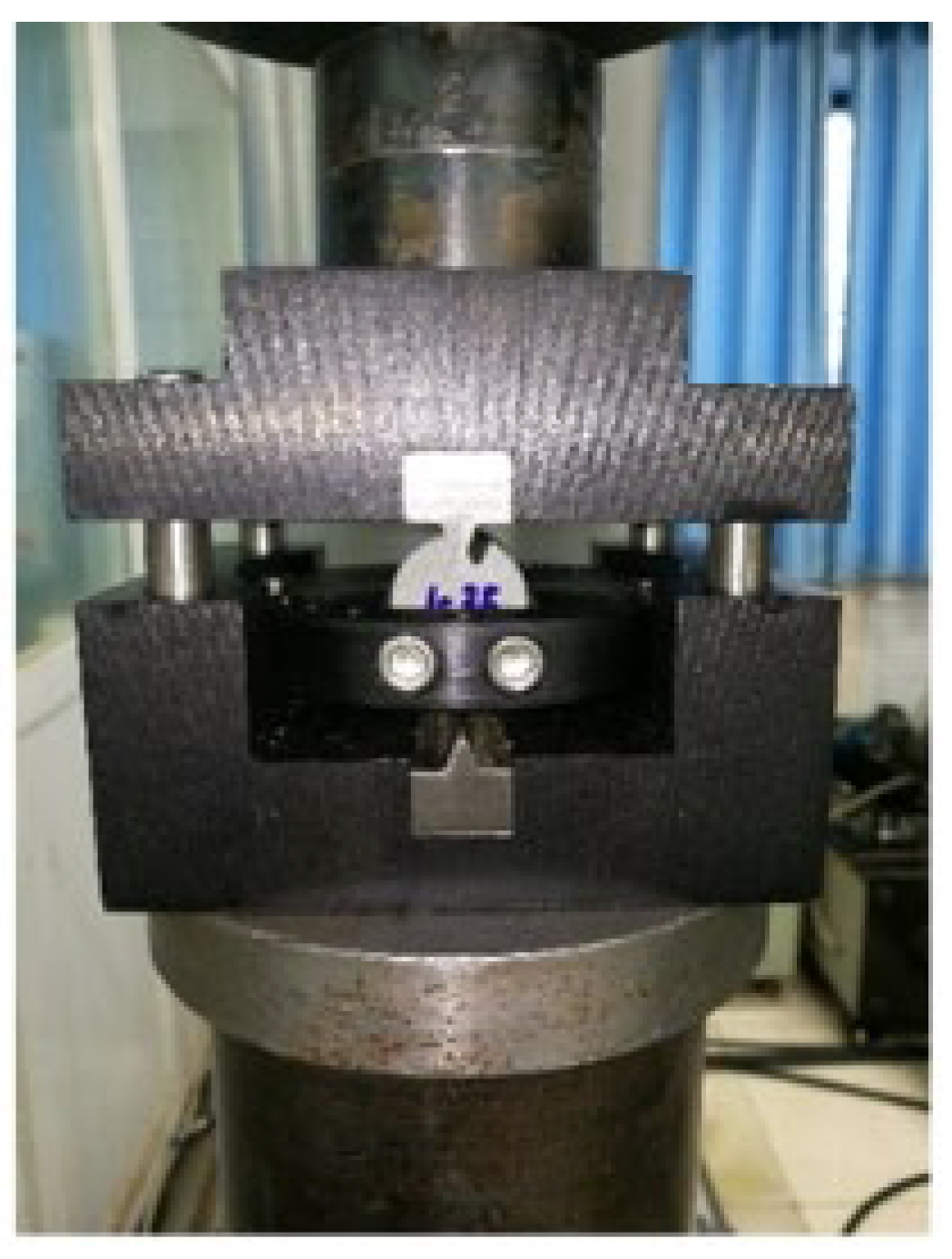
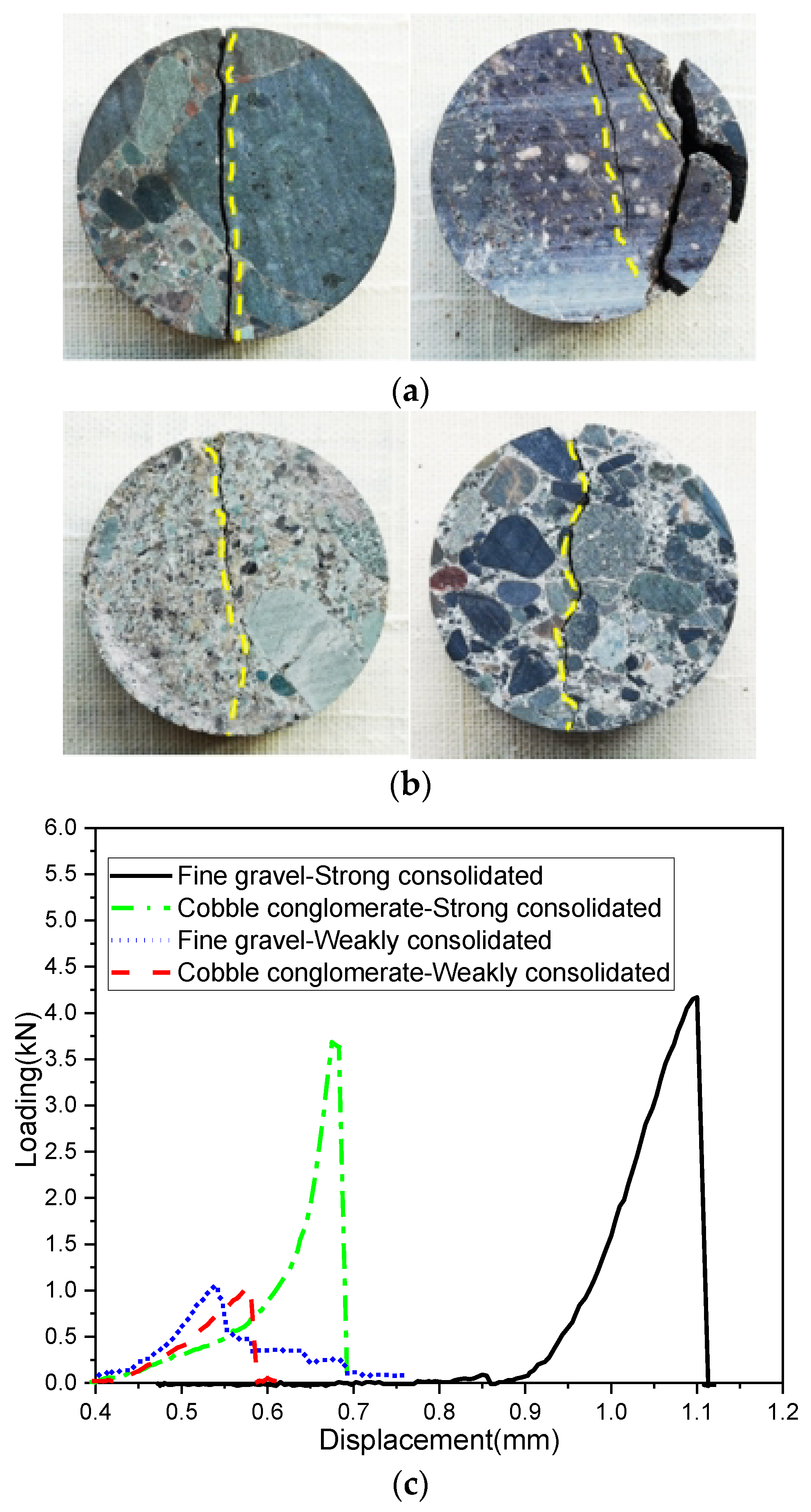


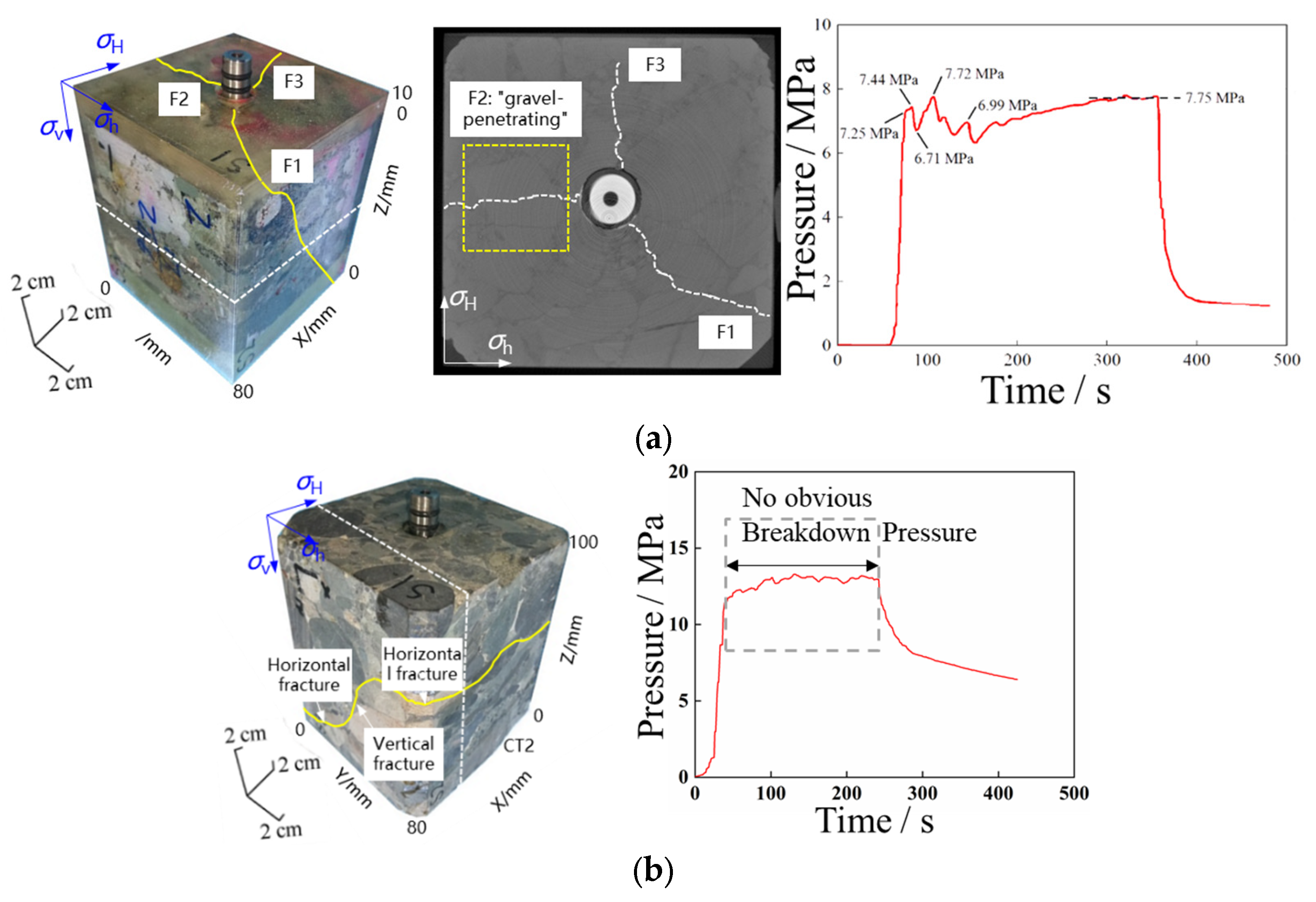
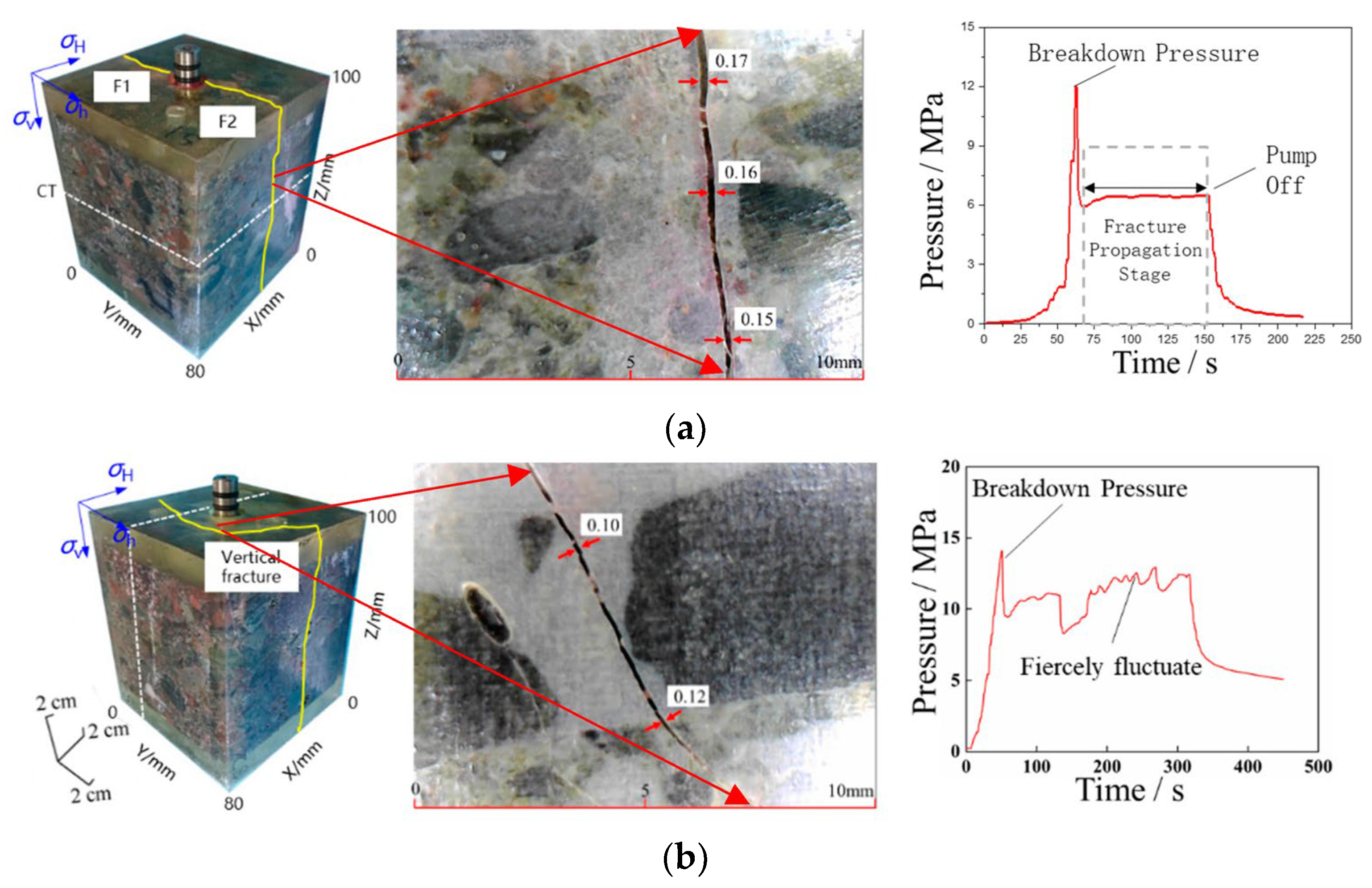
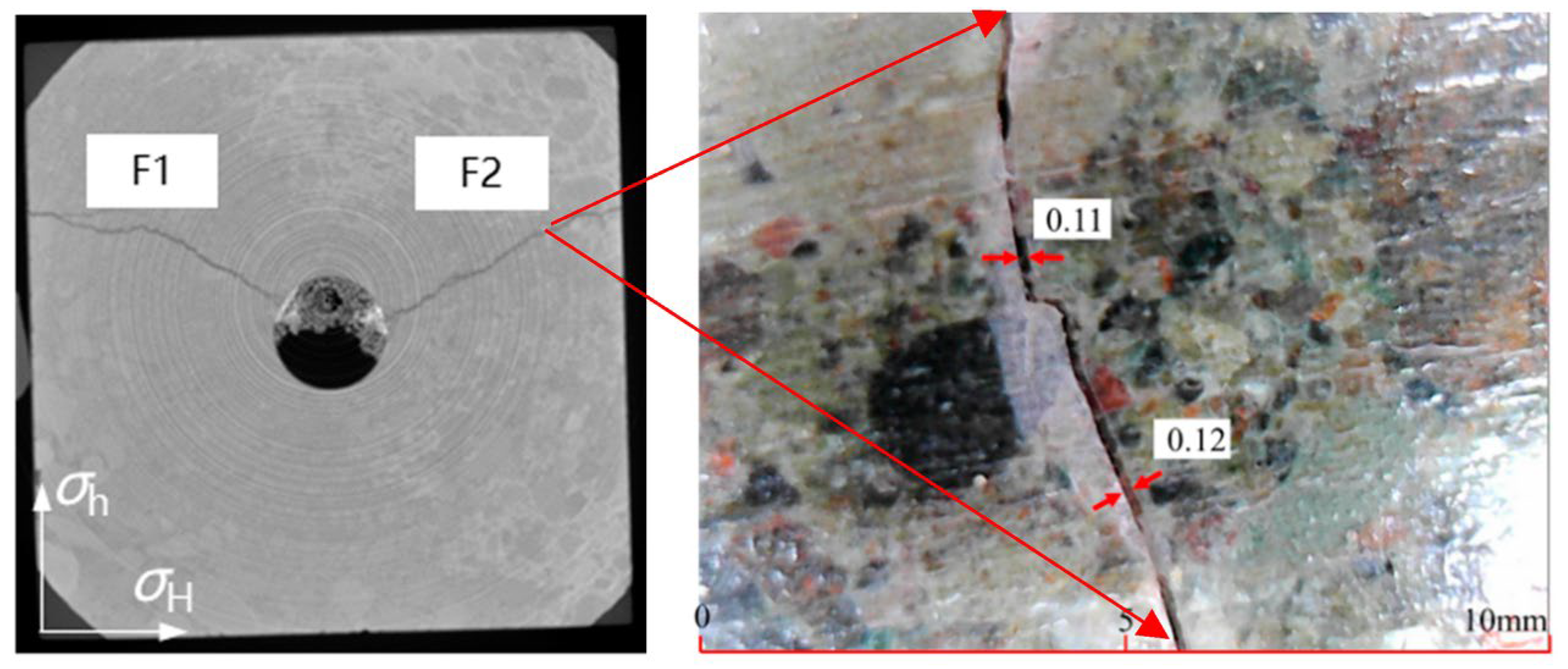


| Label | Gravel Size | Stress Field/MPa (σv/σH/σh) | Pumping Rate Q/(mL/min) | Viscosity Μ (mPa∙s) | Comparison |
|---|---|---|---|---|---|
| #1 | Coarse | 20/17/5 | 50 | 1 (slick water) | Compare the gravel size with #6 |
| #2 | Medium | 20/17/5 | 150 | 1 (slick water) | Compare the viscosity with #5 |
| #3 | 20/17/5 | 200 | 1 (slick water) | Compare the rate with #4 | |
| #4 | 20/17/5 | 50 | 1 (slick water) | Compare the rate with #3 | |
| #5 | 20/17/5 | 100 | 50 (guanidine gum) | Compare the viscosity with #2 | |
| #6 | Fine | 20/17/5 | 50 | 1 (slick water) | Compare the gravel size with #1 |
Disclaimer/Publisher’s Note: The statements, opinions and data contained in all publications are solely those of the individual author(s) and contributor(s) and not of MDPI and/or the editor(s). MDPI and/or the editor(s) disclaim responsibility for any injury to people or property resulting from any ideas, methods, instructions or products referred to in the content. |
© 2023 by the authors. Licensee MDPI, Basel, Switzerland. This article is an open access article distributed under the terms and conditions of the Creative Commons Attribution (CC BY) license (https://creativecommons.org/licenses/by/4.0/).
Share and Cite
Zhu, Y.; Deng, Y.; Qin, J.; Zhang, J.; Zou, Y.; Zhang, S.; Liu, S. Fracture Propagation Mechanism of Tight Conglomerate Reservoirs in Mahu Sag. Processes 2023, 11, 1958. https://doi.org/10.3390/pr11071958
Zhu Y, Deng Y, Qin J, Zhang J, Zou Y, Zhang S, Liu S. Fracture Propagation Mechanism of Tight Conglomerate Reservoirs in Mahu Sag. Processes. 2023; 11(7):1958. https://doi.org/10.3390/pr11071958
Chicago/Turabian StyleZhu, Yue, Yusen Deng, Jianhua Qin, Jing Zhang, Yushi Zou, Shicheng Zhang, and Shikang Liu. 2023. "Fracture Propagation Mechanism of Tight Conglomerate Reservoirs in Mahu Sag" Processes 11, no. 7: 1958. https://doi.org/10.3390/pr11071958




